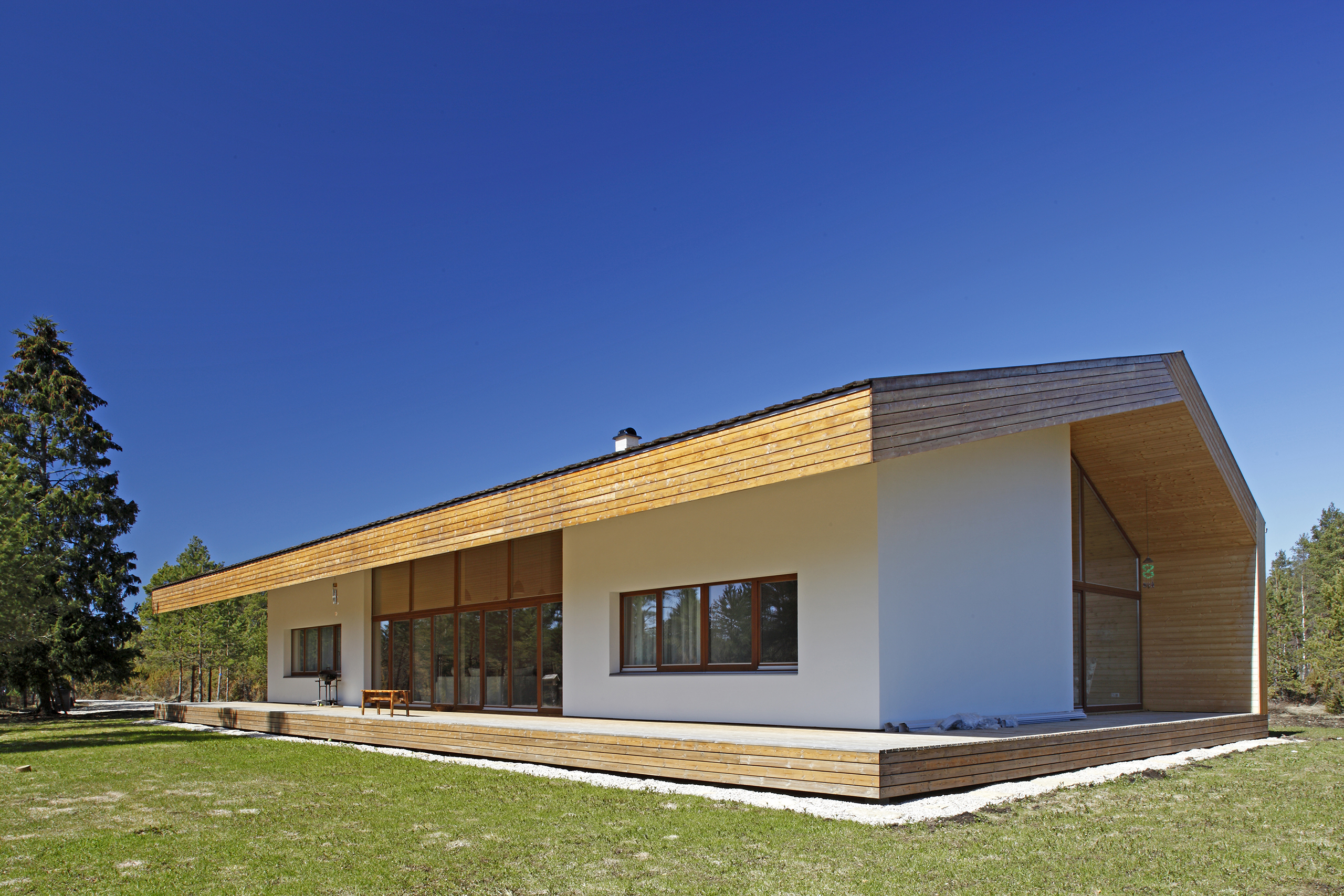
Saavutamaks avarat ning valgusküllast maja, et pea see tingimata tähendama klaasmaja. Oluline on paigutada klaaspinnad logistiliselt õigetesse asukohtadesse, sõltuvalt kasutaja liikumisest majas. Loomaks seda süsteemi on aluseks võetud teljestik 1x1m, mille ühikuid on täidetud vastavalt loomaks privaatseid (magamistoad, vannituba, wc) ning sotsiaalseid (ühisruumid nagu elutuba, sauna eesruum, kabinet) ruume ning nende ruumide vahelisi kvaliteetseid logistilisi suhteid. Magamistoad on viidud lahku niisketest ja tehnilistest ruumidest, mille tulemusena tekkiv vaheruum moodustabki need eelnevalt kirjeldatud ühisruumid nagu suur elutuba koos köögiga hoone keskel ning hoone otstes sauna eesruum ja kabinet.
Hoonel ei ole seetõttu ühtegi koridori, kuna vaheruumi kitsamad kohad on ka ruumid, näiteks nagu pesupesemine ja dushi esine kuivatusala – iga ruutsentimeeter on hoones praktilise kasutusega. Tekib hoone siseselt avar ning jätkuv vaheruum, millest avanevad vaated loodusele 360 kraadi. Hoone avatus on suures osas suunatud risti läbi hoone keskme avaneva panoraamse vaate just looduslikku tagaaeda ning läbi köögiakna eeshoovi. Avatus teises suunas on piki maja, avarate vaadetega hoone otstes. Seeläbi on saavutatud avar ja valgusküllane siseruum, mis suhtleb tugevalt loodusega.
Piire siseruumi ja loodusega kaotab veelgi ümber kogu maja kulgev kaetud terrass, mis on praktiline heitlikku ilmastikku silmas pidades ja on ka energiasäästlikku ehitust soosiv. Nimelt hoone katus, mis ulatub üle hoone kolmes küljes, laseb talvel sisse madala päikesekiirguse oma soojusega (tuleb vähem kütta hoonet) ning suvel varjab üleulatuv katus suvist otsest kuuma päikest paistmaks tuppa (on vaja vähem jahutada hoonet).
To achieve a spacious and bright house, it must necessarily mean a glass house. It is important to place the glass surfaces in the logistically correct locations, depending on the user’s movement in the house. To create this system, a 1x1m axis has been used, the units of which have been filled in to create private (bedrooms, bathroom, toilet) and social (common rooms such as living room, sauna lobby, office) and high-quality logistical relations between these rooms. The bedrooms are separated from the damp and technical rooms, as a result of which the resulting space forms these previously described common areas, such as a large living room with a kitchen in the middle of the building and a sauna lobby and cabinet at the ends of the building.
The building therefore has no corridors, as the narrower spaces in the compartment are also spaces, such as laundry and the drying area in front of the shower – every square centimeter is in practical use in the building. There will be a spacious and continuous space inside the building, from which the views of nature will open 360 degrees. The openness of the building is largely directed across the panoramic view through the center of the building to the natural backyard and through the front window of the kitchen window. Openness in the other direction is along the house, with wide views at the ends of the building. This results in a spacious and bright interior that communicates strongly with nature.
The boundaries with the interior and nature are further lost by the covered terrace running around the whole house, which is practical in view of the volatile weather and is also favorable for energy-efficient construction. Namely, the roof of the building, which extends over the three sides of the building, lets in low solar radiation with its heat in winter (the building needs to be heated less) and in summer the overhanging roof hides the room from direct hot sun in summer (less cooling).
Risto Parve, Kai Süda
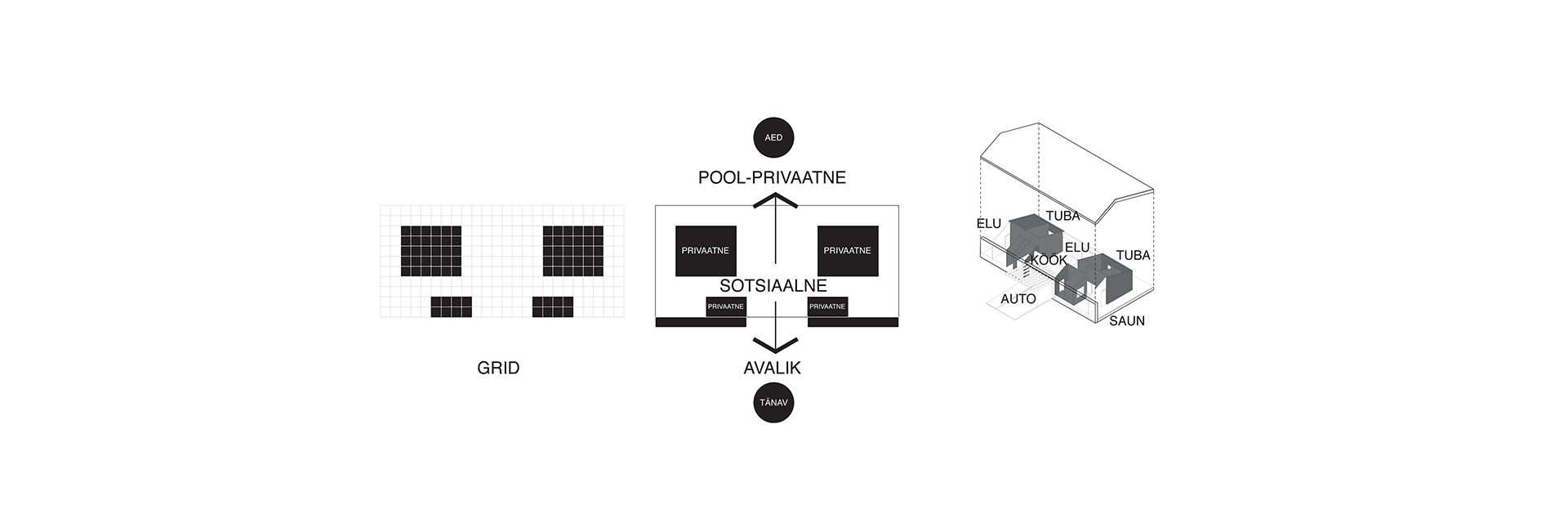
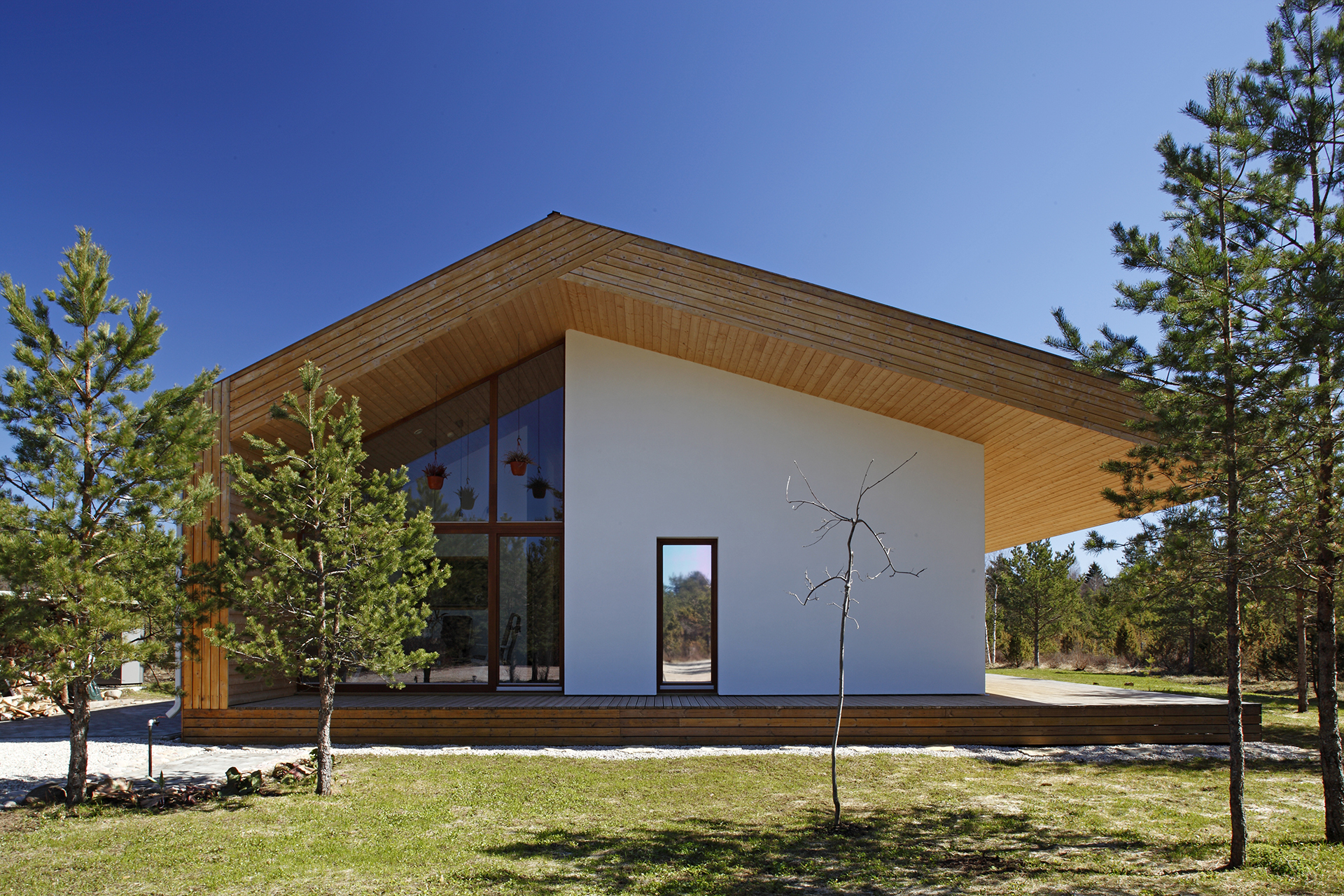
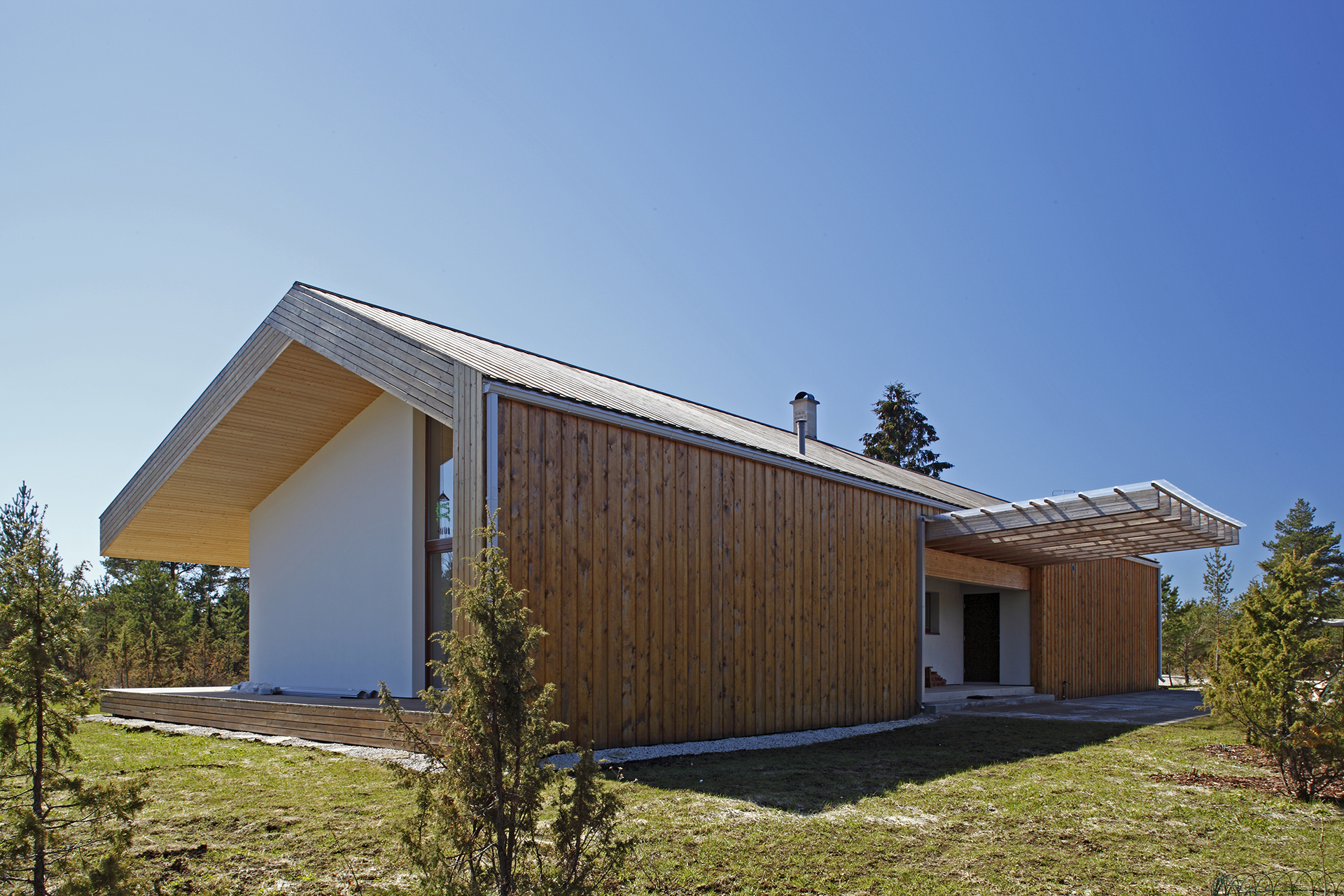
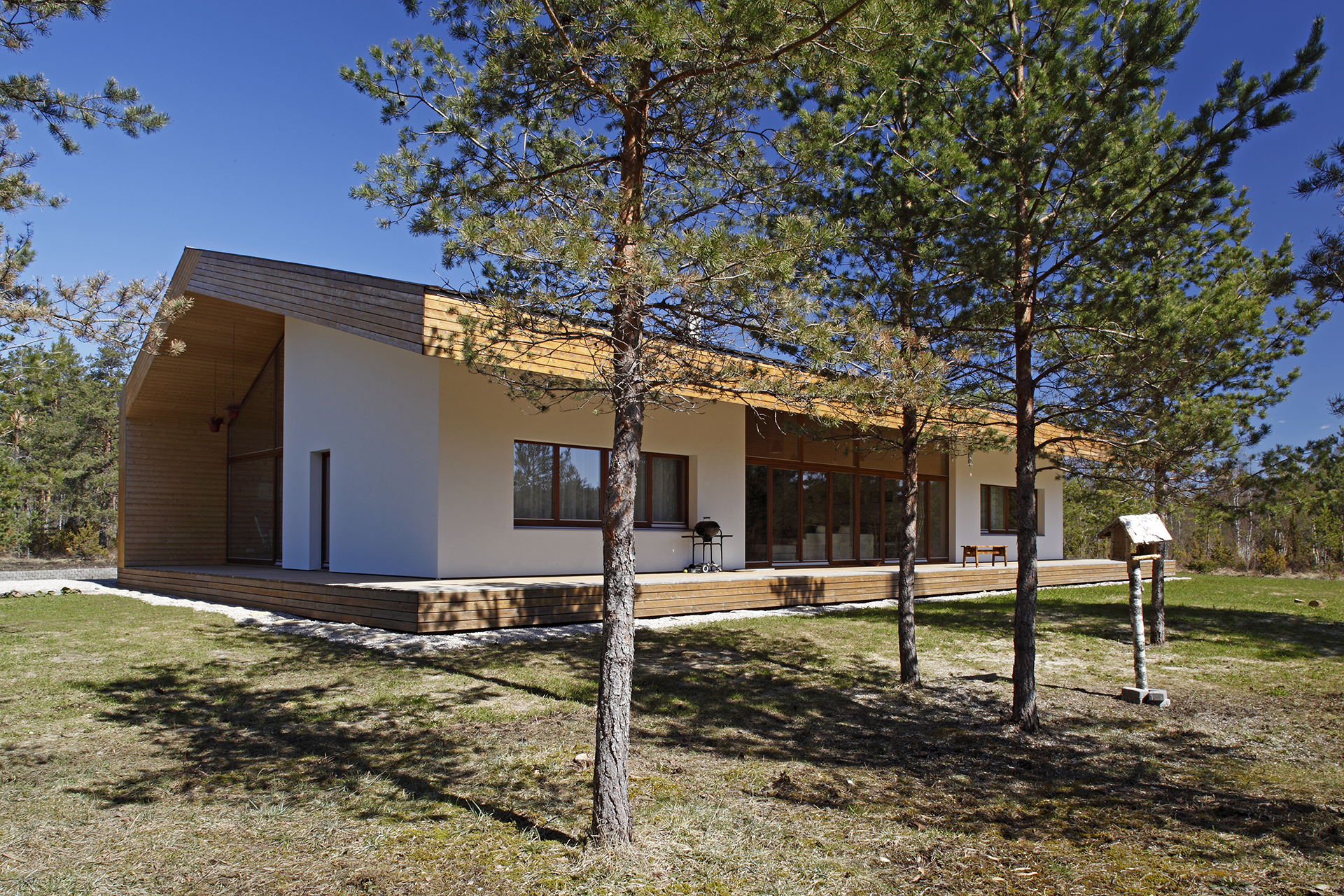

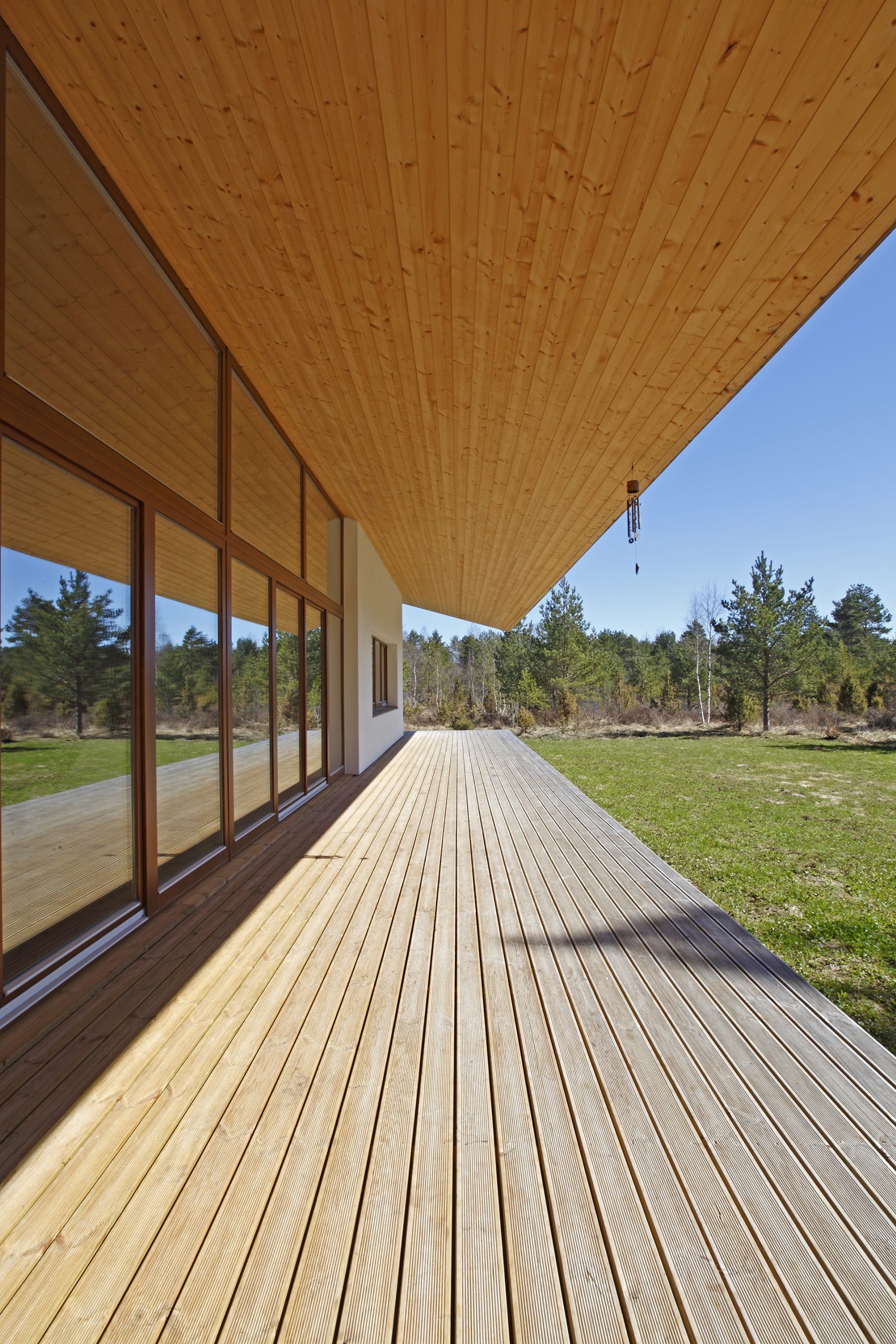
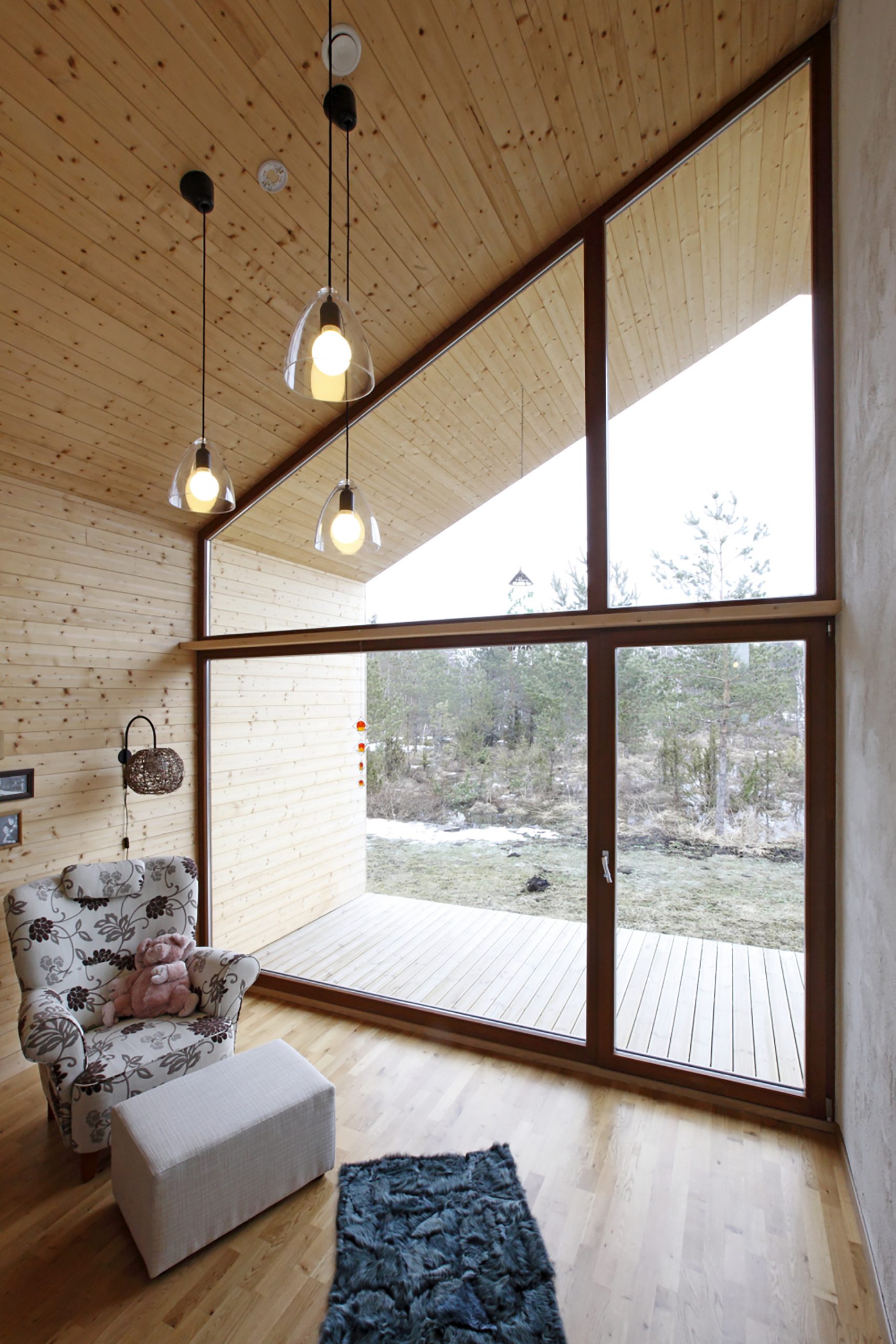
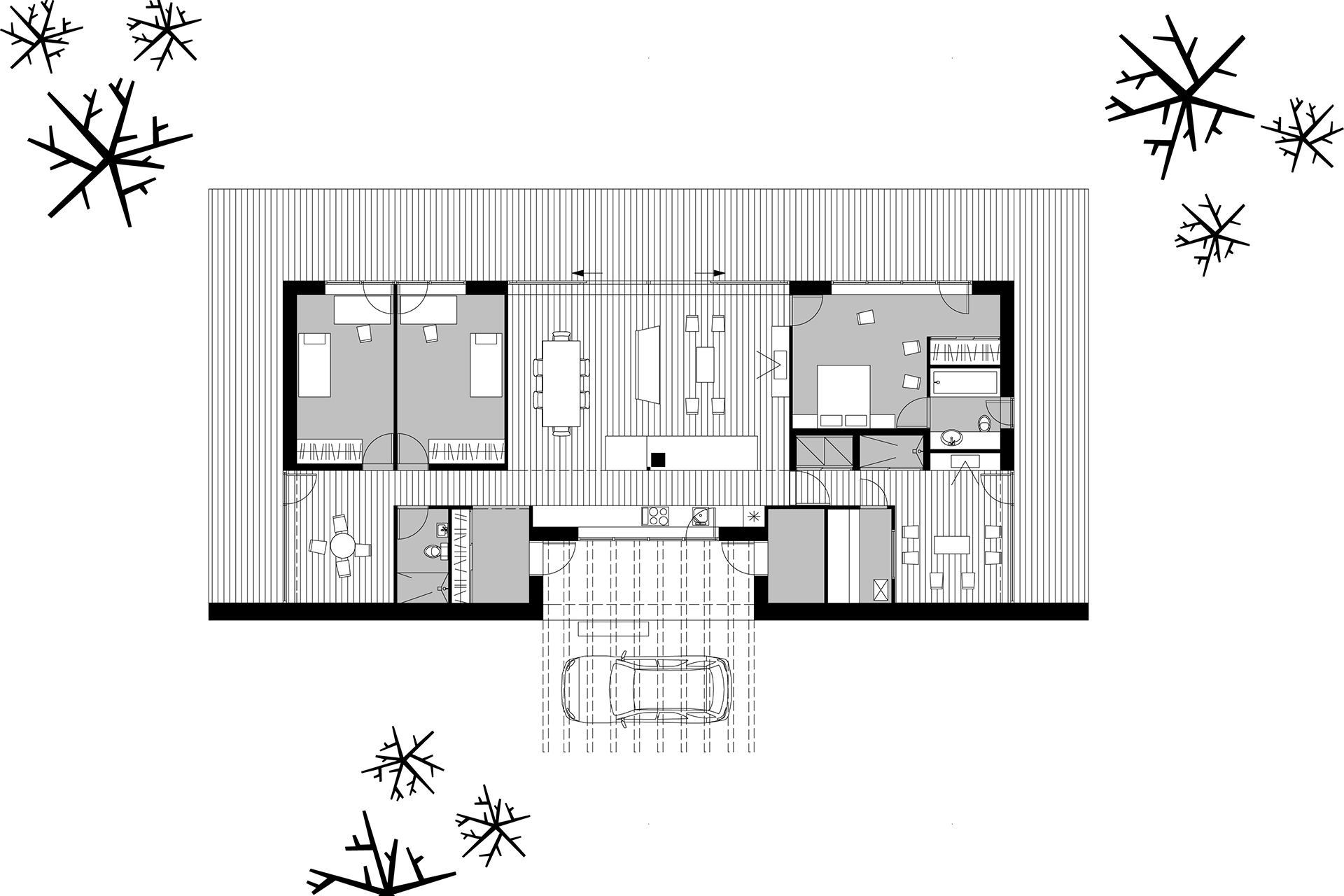 Plaan / Ground Floor
Plaan / Ground Floor
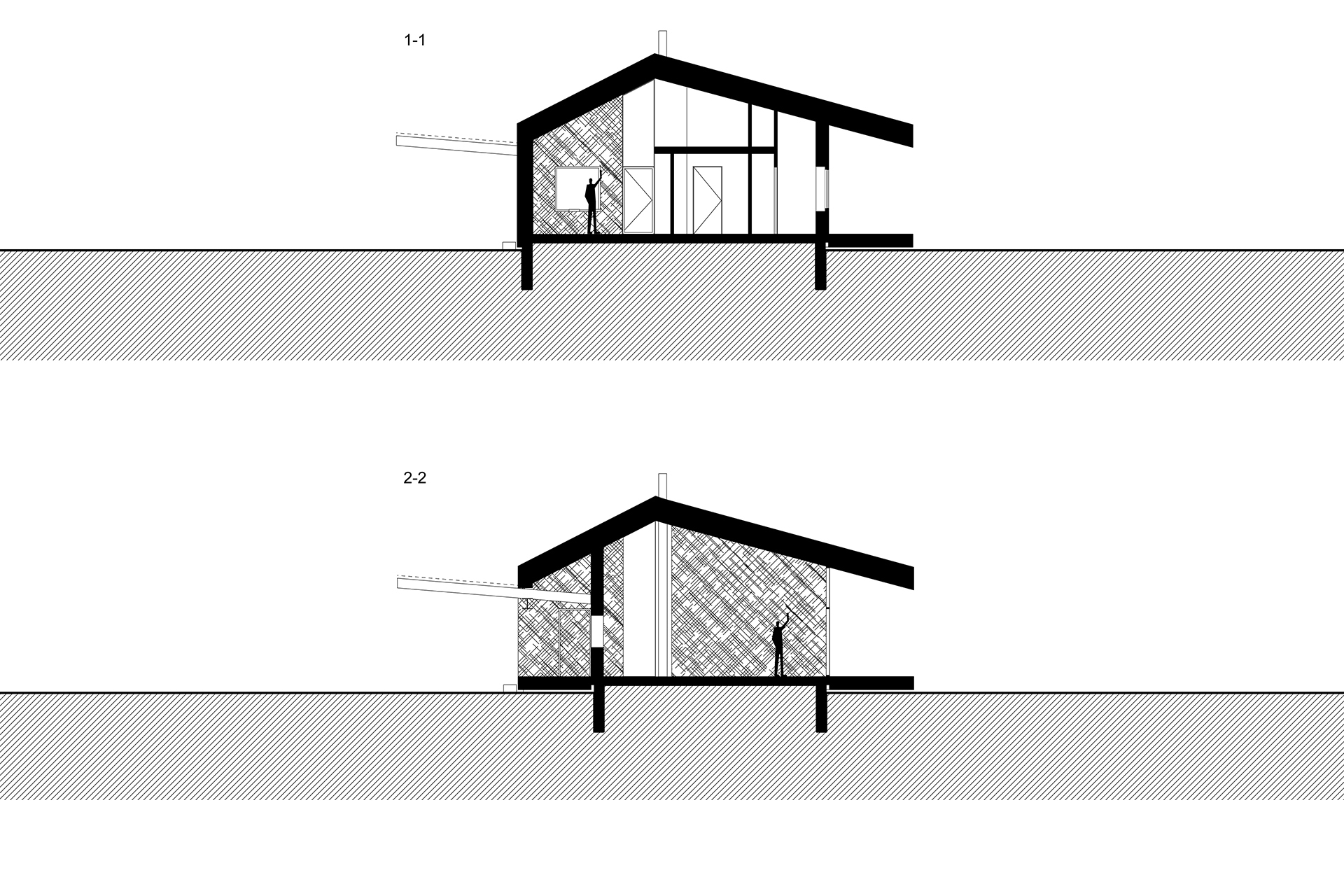 Lõiked / Sections
Lõiked / Sections

